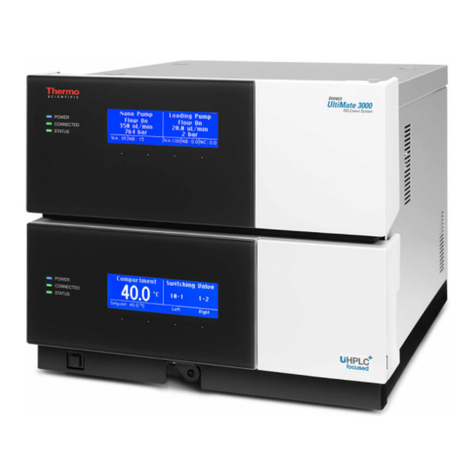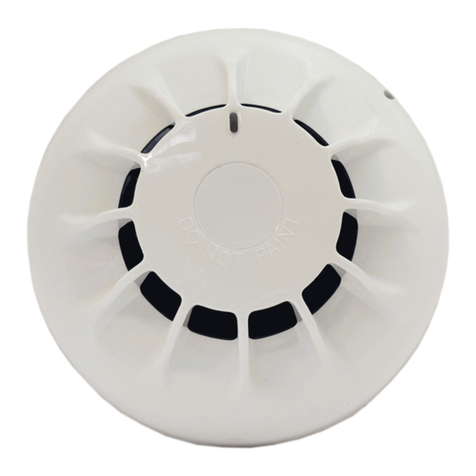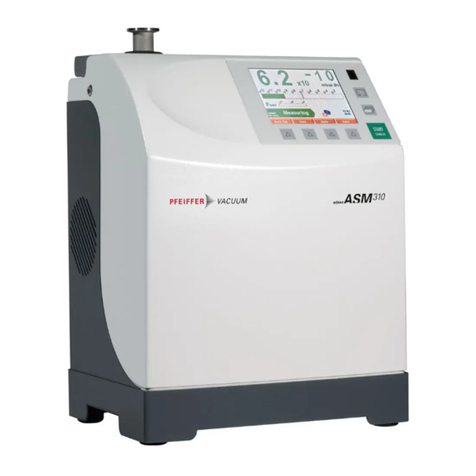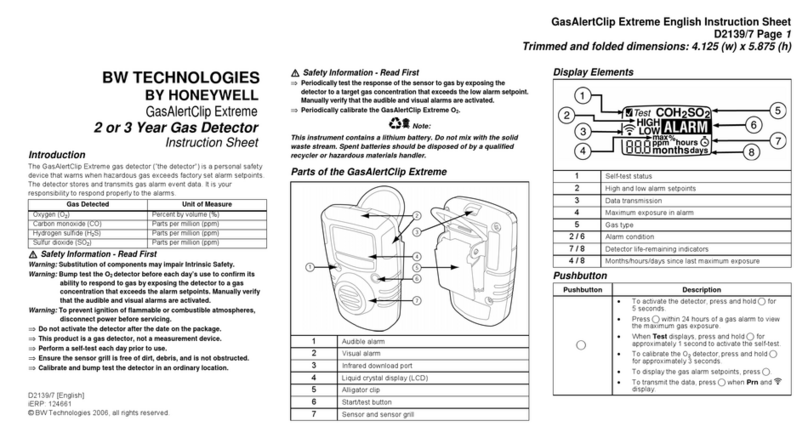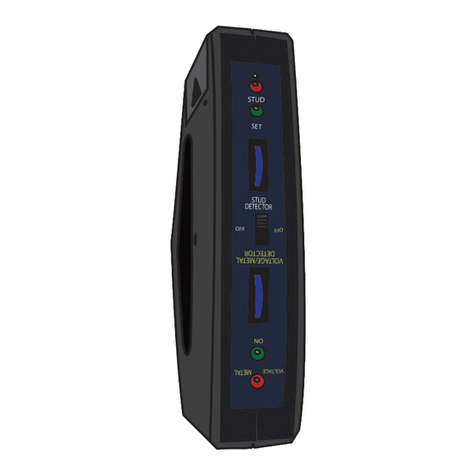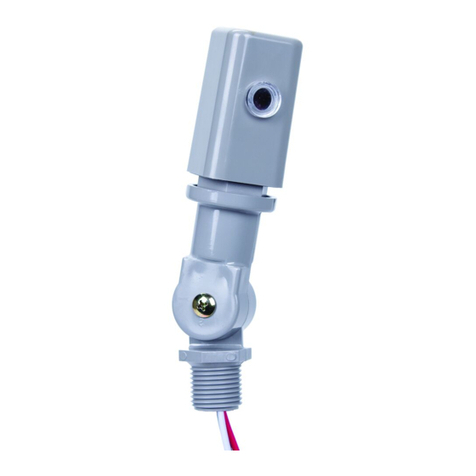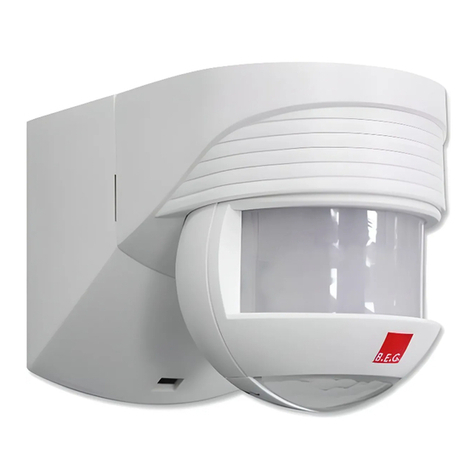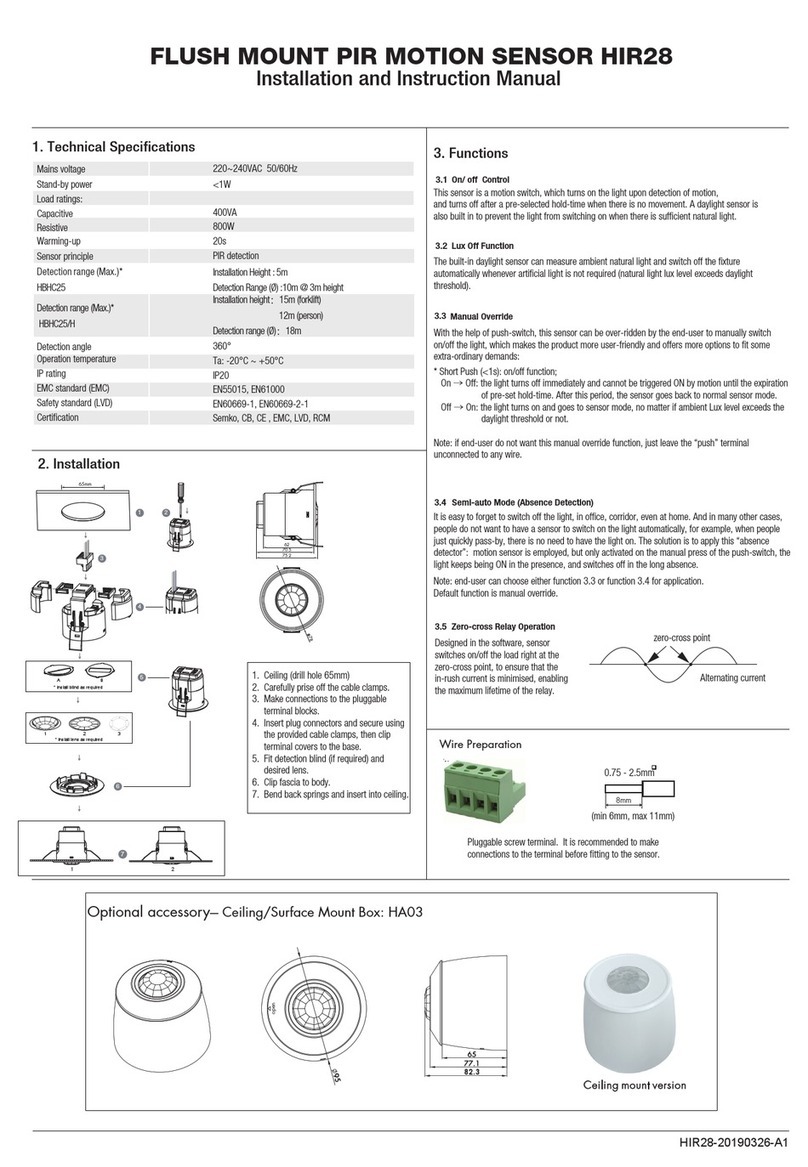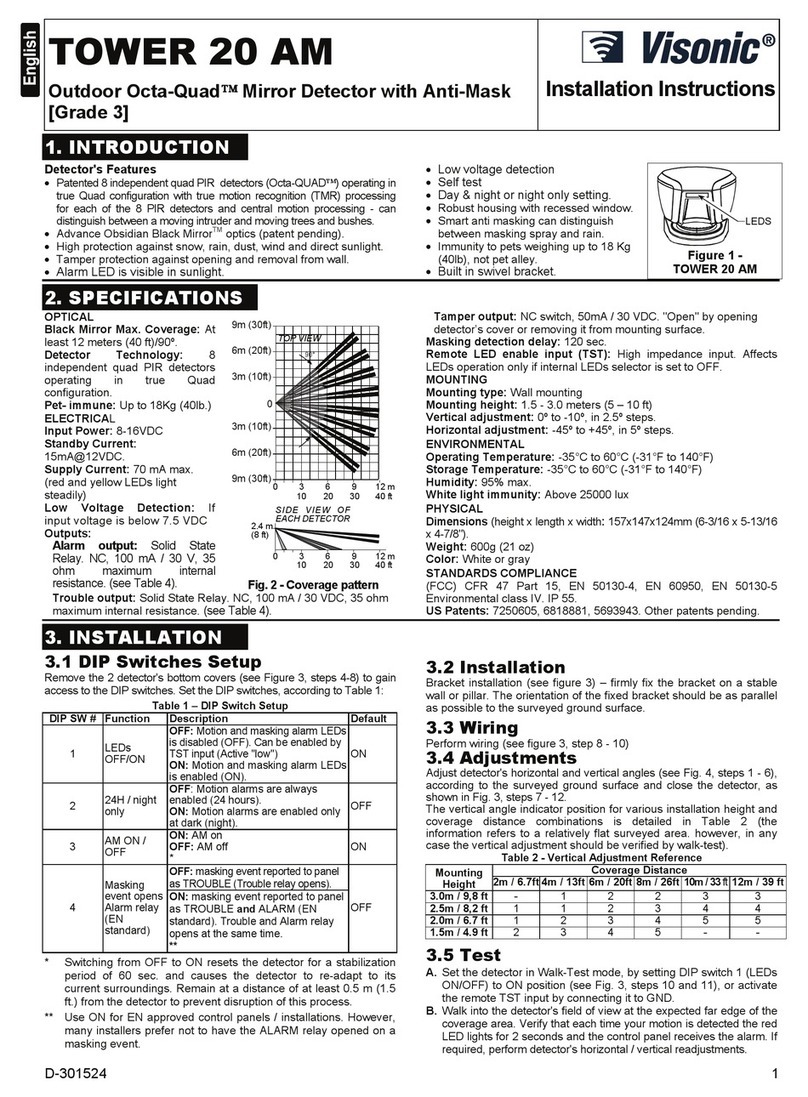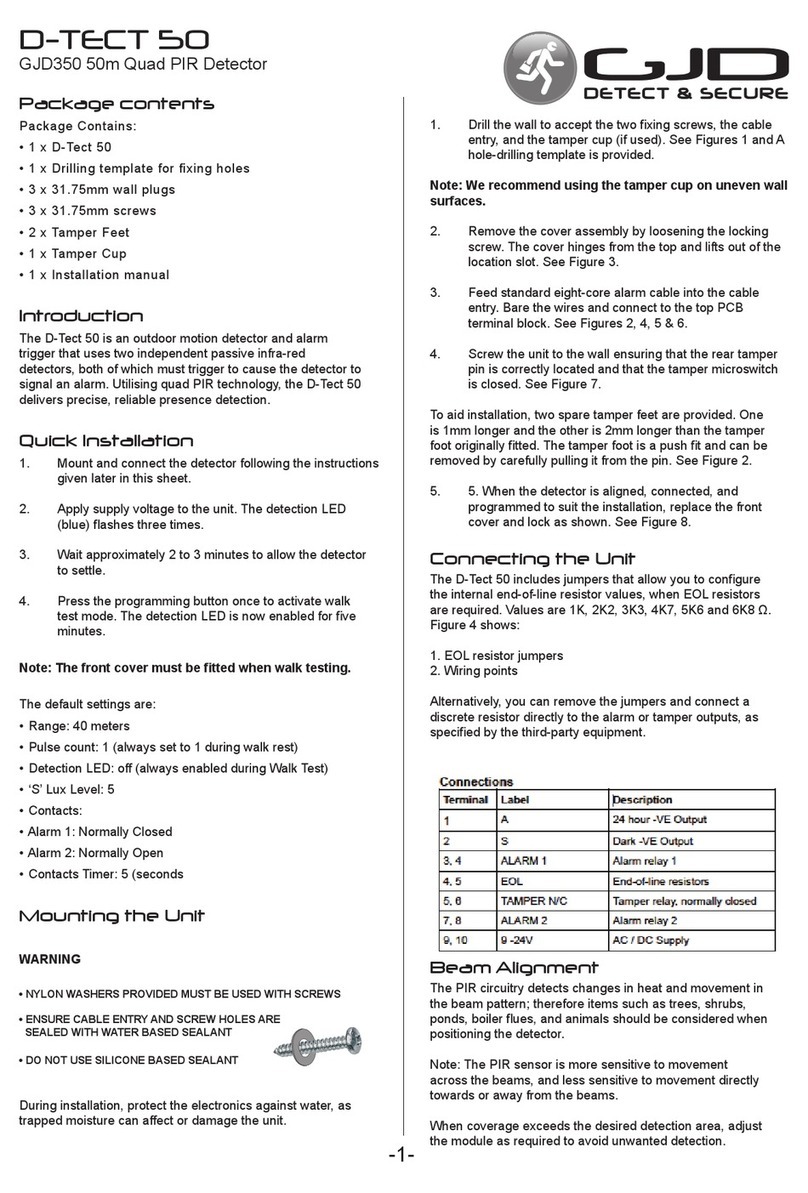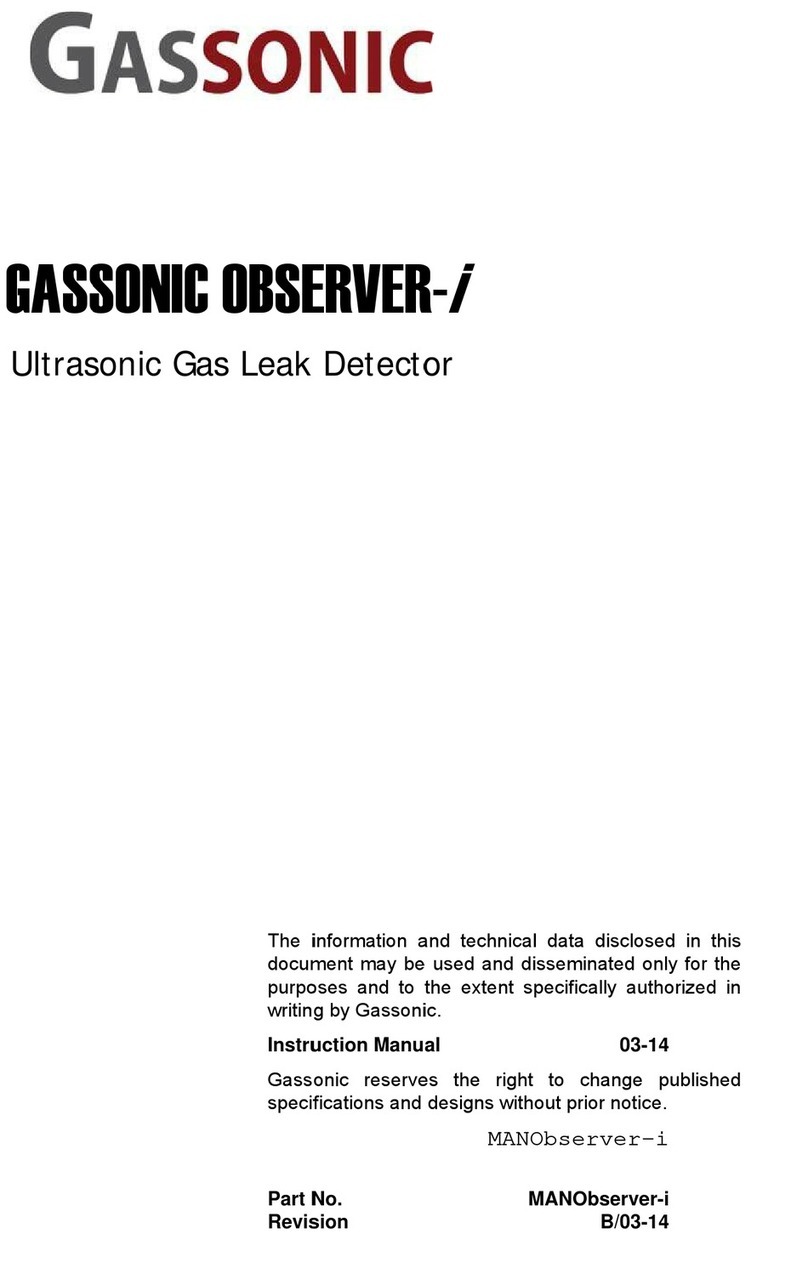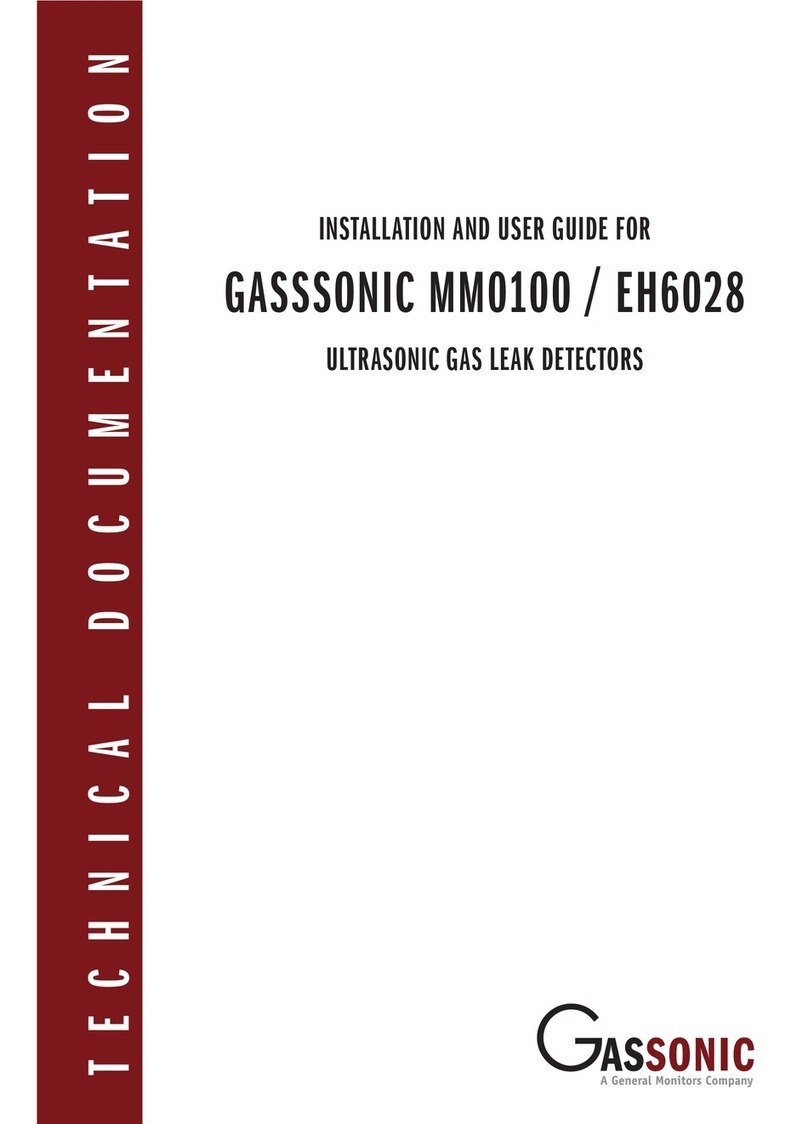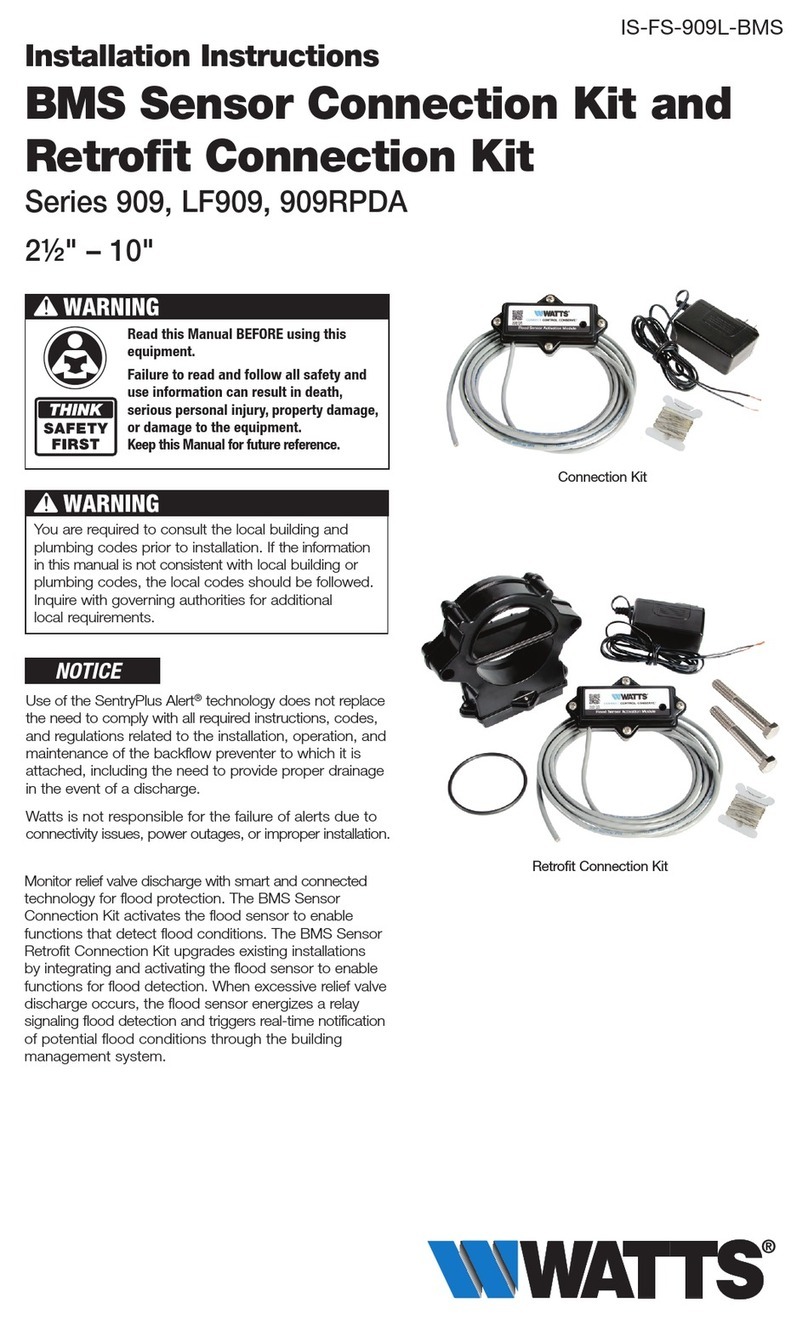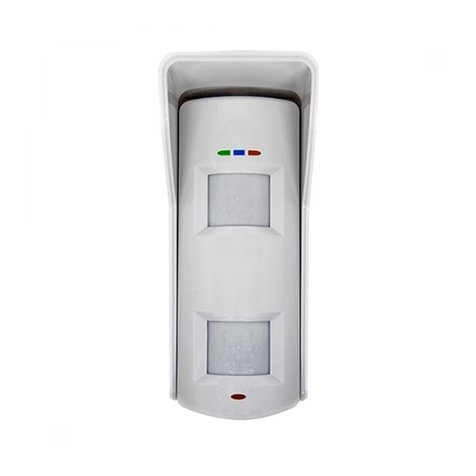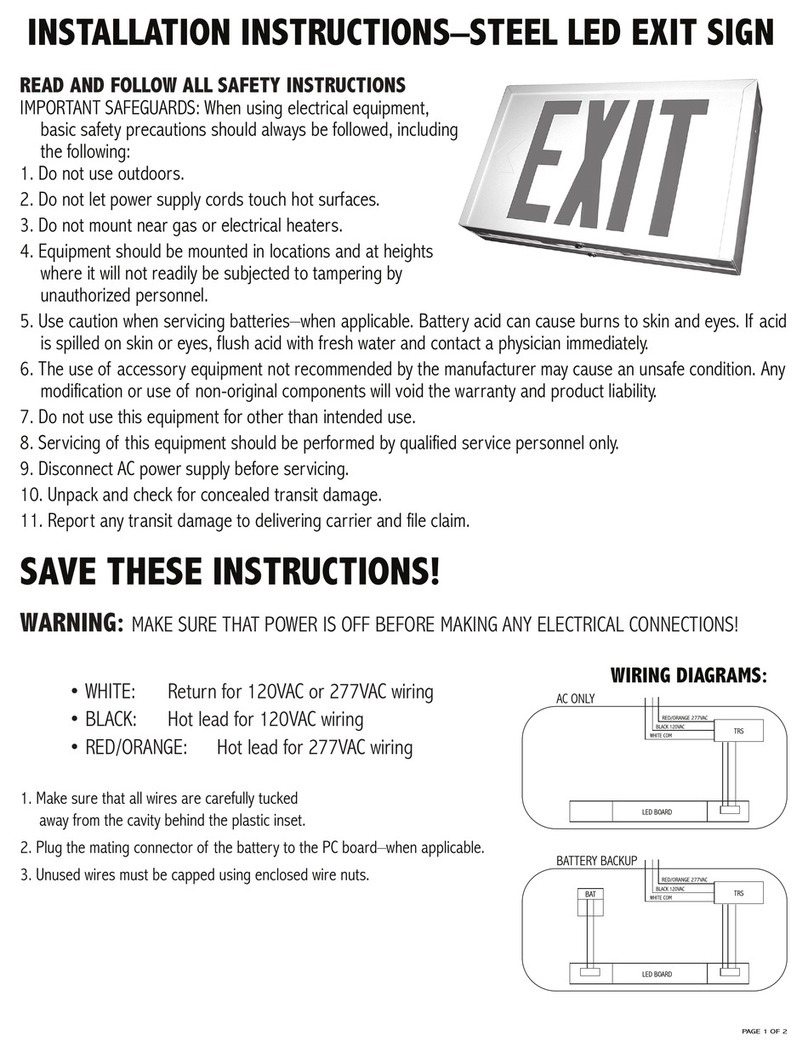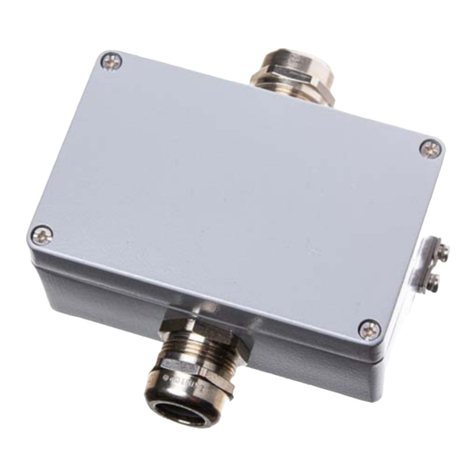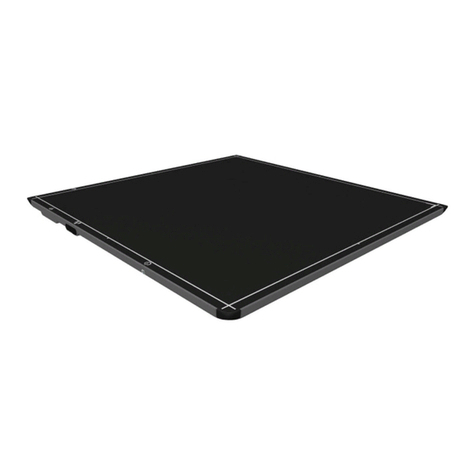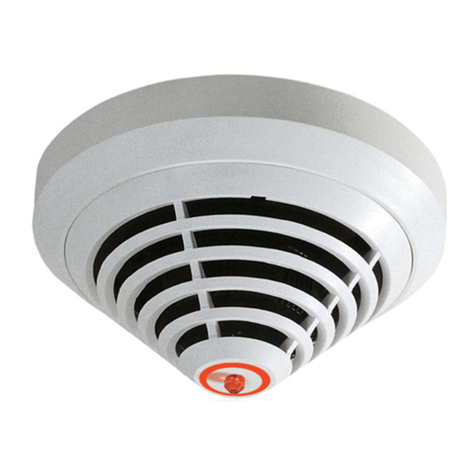
2.0 - BACKGROUND NOISE MAPPING
The Gassonic Surveyor filters out frequencies below 25 kHz. However, a few sources other than leaking gas may produce
ultrasonic noise above 25 kHz, and could therefore trigger the detector. To avoid these sources influencing the gas leak
detector, it is recommended to perform a background noise mapping survey of the plant using the Gassonic 1700
Ultrasonic Mapping Meter.
The mapping survey makes it easy to adjust the trigger level and the delay time of each detector so that it is unaffected by
background noise in the area covered. Gassonic can be contacted for further details on performing this mapping survey.
2.1 - NOISE LEVELS
It is helpful to know the actual noise level before installation, as this has influence on the Gassonic Surveyor’s detection
range. Most environments can be divided in three overall noise levels.
1 2
3 m
1m 2m 3m 4m 5m 6m 7m 8m 9m 10m 11m 12m13m 14m15m 16m
12 3
3
VERY LOW-NOISE AREAS
In ”very low-noise areas”, where
background noise is below 58 dB,
the trigger level must be set to at
least 64 dB. This corresponds to
a detection radius of 13-20 m.
Typical areas:
• Onshore wellhead areas in
calm environment
• Salt dome gas storage
facilities in calm environment
LOW-NOISE AREAS
In ”low-noise areas”, where
background noise is below
than 68 dB, the trigger level
must be set to at least 74 dB.
This corresponds to a detection
radius of 9-12 m.
Typical areas:
• Areas with no machinery
• Areas with low frequency
machine made noise
HIGH-NOISE AREAS
In ”high-noise areas”, where
background noise is below 78 dB,
the trigger level must be set to at
least 84 dB. This corresponds to
a detection radius of 5-8 m.
Typical areas:
• Turbo compressor areas
• Complete open offshore
weather deck
• Next to very noisy machinery
If the Gassonic Surveyor is mounted
above floor grating, the detection
range will continue downwards.
Installation and User Guide for Gassonic Surveyor (BB6019-01) Page 4





















